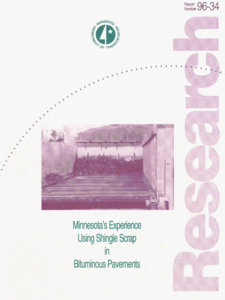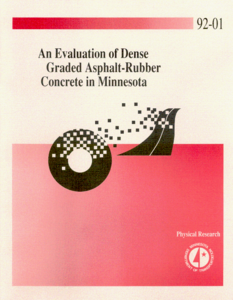Evaluation of "Plus Ride" (A Rubber Modified Plant Mixed Bituminous Surface Mixture)
Creator
Date Created
1990-01
Report Number
90-01
Description
Minnesota's Experience with Scrap Shingles in Bituminous Pavements
Creator
Date Created
1996-10
Report Number
96-34
Description
Sawing and Sealing Joints in Bituminous Pavements to Control Cracking
Creator
Date Created
1996-03
Report Number
96-27
Description








